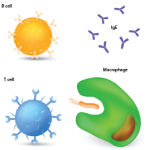ACR CONVERGENCE 2020—The definition of cell type depends increasingly on a cell’s molecular features. On Friday, Nov. 6, 2020, Alex Kuo, PhD, senior scientist at Stanford University School of Medicine, Stanford, Calif., described six technologies that are relatively mature and can be used for rheumatic disease research:
- Rapidly developing single-cell RNA sequencing (scRNA-seq);
- Cellular indexing of transcriptomes and epitopes by sequencing (CITE-seq) and RNA expression and protein sequencing assay (REAP-seq) for integrative protein and transcriptome analyses of single cells;
- Assay for transposase-accessible chromatin using sequencing (ATAC-seq) maps for chromatin dynamic maps of single cells;
- Mass cytometry (cytometry by Time-of-Flight) for highly multiplexed single-cell proteomic analysis;
- Imaging mass cytometry for highly multiplexed imaging with subcellular resolution; and
- Epigenetic landscape profiling using cytometry by Time-of-Flight (EpiTOF).
These technologies are complementary with conventional immunology and molecular biology methods, and they allow for new biological insights as well as the generation of new hypotheses.
ad goes here:advert-1
ADVERTISEMENT
SCROLL TO CONTINUE
Check back for our full report.


